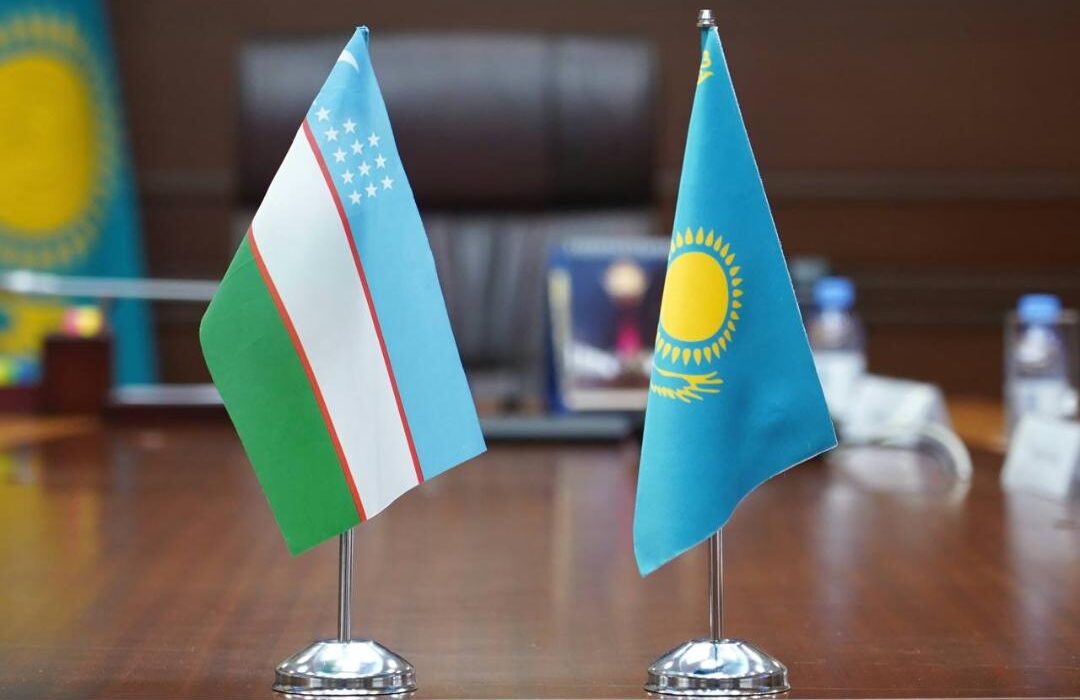Recently, Uzbek economist Behzod Khoshimov stated that it will take Uzbekistan 30 years to catch up with Kazakhstan in terms of economic development. In the article below, Ulysmedia.kz tried to understand whether Khoshimov is right and why this old rivalry still determines the region’s development.
The rivalry between Kazakhstan and Uzbekistan began during the Soviet era. As part of the USSR, Uzbekistan was the leader in population and agriculture, and Kazakhstan in industry and grain production. After 1991, Kazakhstan has overtaken Uzbekistan due to its oil resources and a more liberal policy.
Since Soviet times, Uzbekistan has maintained a more significant role for industrial production in the structure of its GDP. In the 1990s, Uzbekistan tried to repurpose and preserve large manufacturing enterprises. This helped to create a certain reserve for the future, providing a more stable base for growth in some sectors. After the collapse of the USSR, both countries embarked on the path of market reforms, albeit with different degrees of intensity. Kazakhstan, rich in hydrocarbons, quickly moved towards a raw materials economy, attracting significant foreign investment in the oil and gas sector. Uzbekistan chose a more gradual and controlled transition. This was reflected in the fact that Kazakhstan reached its 1991 level in terms of GDP per capita by 2002, while it took Uzbekistan until 2007.
Khoshimov, PhD in economics and a lecturer at New York University, believes that it will take Uzbekistan three decades to catch up with Kazakhstan in terms of investment and living standards. He particularly emphasizes the low volumes of foreign direct investment: for example, in 2023, Uzbekistan received only $2.2 billion in foreign direct investment.
According to Khoshimov, the lack of reforms in the courts to ensure the execution of contracts is the key obstacle. The reason why Uzbekistan has failed to become attractive to investors is that when it says “measures to attract investment,” it only means preferences, not the rules of the game. The main reason for the lack of investment remains the failure to implement reforms in such important areas as simple and clear rules of the game, contract enforcement, independence and competence of the courts.
However, it seems that the Uzbek economist underestimates the growth in Uzbekistan. In 2024, the economy of Uzbekistan grew by 6.5% to $115 billion. Kazakhstan increased its GDP by 6.2% to $288-$301 billion. That is, Uzbekistan is winning back: growth is higher, the dynamics are faster. For comparison, here are economic figures of Kazakhstan and Uzbekistan for 2024–2025:
– GDP — $301 billion in Kazakhstan and $115 billion in Uzbekistan
– GDP growth — 6.2% (2024), 5.6% (2025, forecast) for Kazakhstan / 6.5% (2024), 5.6% (2025, forecast) for Uzbekistan
– GDP per capita — $15,100 in Kazakhstan / $3,468 in Uzbekistan.
Kazakhstan leads in FDI, GDP per capita, and the size of its economy. Uzbekistan is better in terms of economic growth rates and the size of its population.
Kazakh analyst Maxim Kaznacheyev notes that Kazakhstan’s nominal GDP in 2021 — $197 billion — was 1.3 times greater than that of the rest of the Central Asian countries put together. But it is important that Uzbekistan’s population is larger (38 million versus 20 million in Kazakhstan).
One of the key drivers of economic development is foreign direct investment. Kazakhstan has attracted $150 billion of FDI over 30 years, while Uzbekistan — $40 billion. The difference is understandable: Kazakhstan opened up to the world earlier, while Uzbekistan began active reforms only in 2016. Last year, however, Uzbekistan overtook Kazakhstan in terms of FDI.
Kazakhstan began attracting FDI back in the 1990s, with the peak in 2013-2014. As to Uzbekistan, given its previous closed nature… it only needed to open up a little, and investments poured in, explains Kazakh financial analyst and economist Arman Beisembaev.
Uzbekistan is still lagging behind. But if tax and judicial reforms are carried out; more investment is attracted; the demographic dividend is used, the gap can be reduced much faster. Perhaps, Khoshimov somewhat underestimates the dynamics of Uzbekistan and overestimates the stability of Kazakhstan. While Kazakhstan, according to various estimates, shows GDP growth of 4.0-5.6% in 2024-2025, Uzbekistan demonstrates more aggressive rates — 5.6% in 2024 and a forecast of 6.0-6.7% for 2025 according to the World Bank and IMF.
Expert Anton Morozov believes that Kazakhstan is an oil and gas economy with high risks of raw material dependence. Uzbekistan, if it carries out reforms, can catch up faster due to its large population and economic diversification.
Kazakhstan and Uzbekistan have different economic models: Kazakhstan is a raw materials giant (oil, gas, uranium), Uzbekistan is an agrarian-industrial economy (cotton, gold, textiles, auto industry). Kazakhstan is richer, but dependent on oil prices. Uzbekistan is poorer, but more resilient in crises. In demographic terms, Uzbekistan has a young population, while Kazakhstan has an aging population. In 30 years, Kazakhstan will have an acute labor shortage, while Uzbekistan will have a surplus.
Economist Marat Kairlenov from Kazakhstan predicts that Uzbekistan could overtake Kazakhstan in GDP by 2037. He points to the need to diversify the Kazakh economy, attract investment into new industries, and review the distribution of national wealth, in particular, by increasing the share of wages in GDP.
Uzbekistan, with its large and rapidly growing population, has demonstrated impressive growth rates and active efforts to attract foreign direct investment, although absolute FDI figures are still lower than those of its neighbor. But Uzbekistan’s focus on industrialization and a more diversified economy could give it a long-term advantage.
